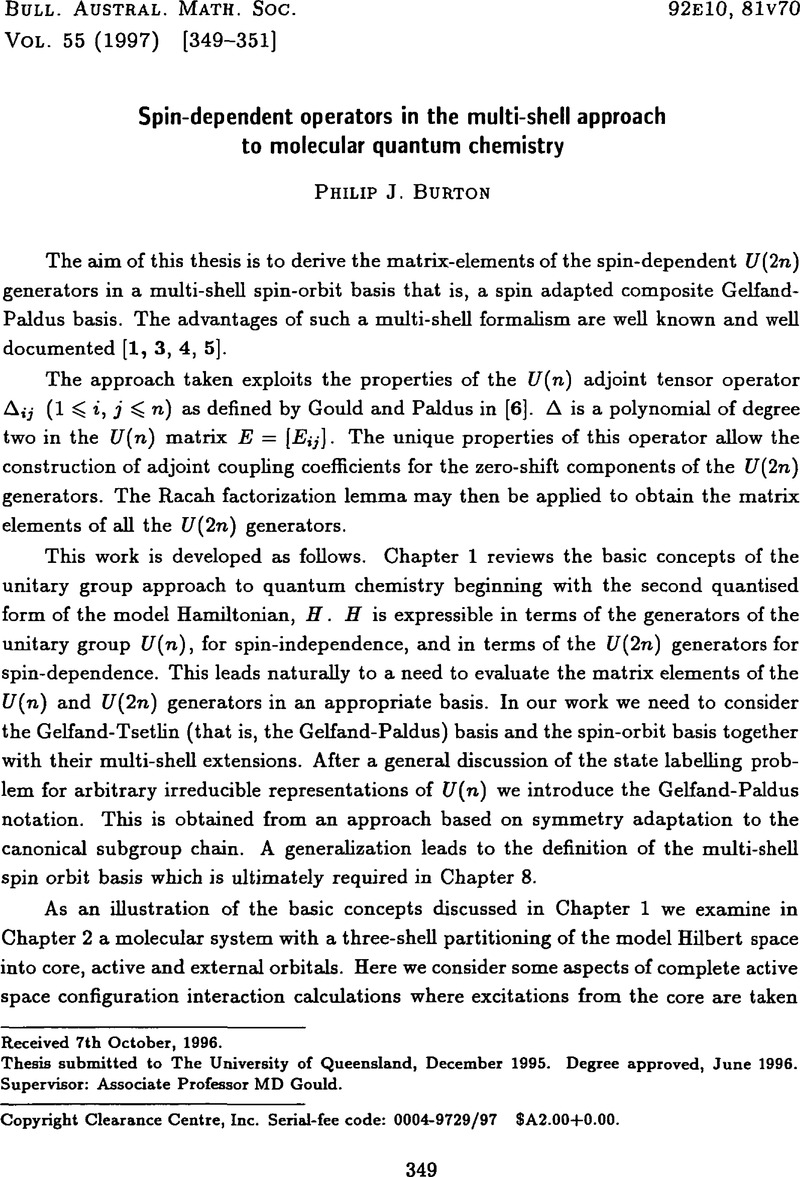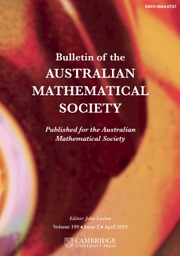No CrossRef data available.
Article contents
Spin-dependent operators in the multi-shell approach to molecular quantum chemistry
Published online by Cambridge University Press: 17 April 2009
Abstract
An abstract is not available for this content so a preview has been provided. As you have access to this content, a full PDF is available via the ‘Save PDF’ action button.

Information
- Type
- Abstracts of Australasian Ph.D. Theses
- Information
- Copyright
- Copyright © Australian Mathematical Society 1997
References
[1]Burton, P.J. and Gould, M.D., ‘A unitary group formulation of the complete active space configuration interaction method II. An approach based on the subgroup chain U (n = n 0 + n 1 + n 2) ⊇ U (n 0) × U (n 1 + n 2) ⊇ U (n 0) × U (n 1) × U (n 2)’, J. Chem. Phys. 96 (1992), 5261–5271.CrossRefGoogle Scholar
[2]Gould, M.D. and Battle, J.S., ‘Spin dependent unitary group approach II. Derivations of matrix elements for spin dependent operators’, J. Chem. Phys. 99 (1993), 5961–5975.CrossRefGoogle Scholar
[3]Gould, M.D., ‘Unitary group approach to general system partitioning II U (n) matrix element evaluation in a composite basis’, Int. J. Quantum Chem. 30 (1986), 365–389.CrossRefGoogle Scholar
[4]Gould, M.D. and Chandler, G.S., ‘A unitary group formulation of the complete active space configuration interaction method I. General formalism’, J. Quantum Chem. 30 (1989), 3680–3685.Google Scholar
[5]Gould, M.D. and Paldus, J., ‘Unitary group approach to general system partitioning I. Calculation of U (n): U (n 1) × U (n 2) reduced matrix elements and reduced Wigner coefficients’, Int. J. Quantum Chem. 30 (1986), 327–363.CrossRefGoogle Scholar
[6]Gould, M.D. and Paldus, J., ‘Spin dependent unitary group approach I. General formalism’, J. Chem. Phys. 92 (1990), 7394–7401.CrossRefGoogle Scholar

